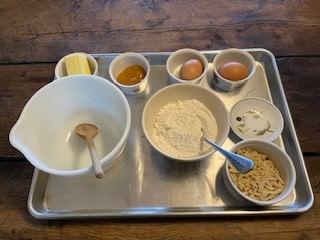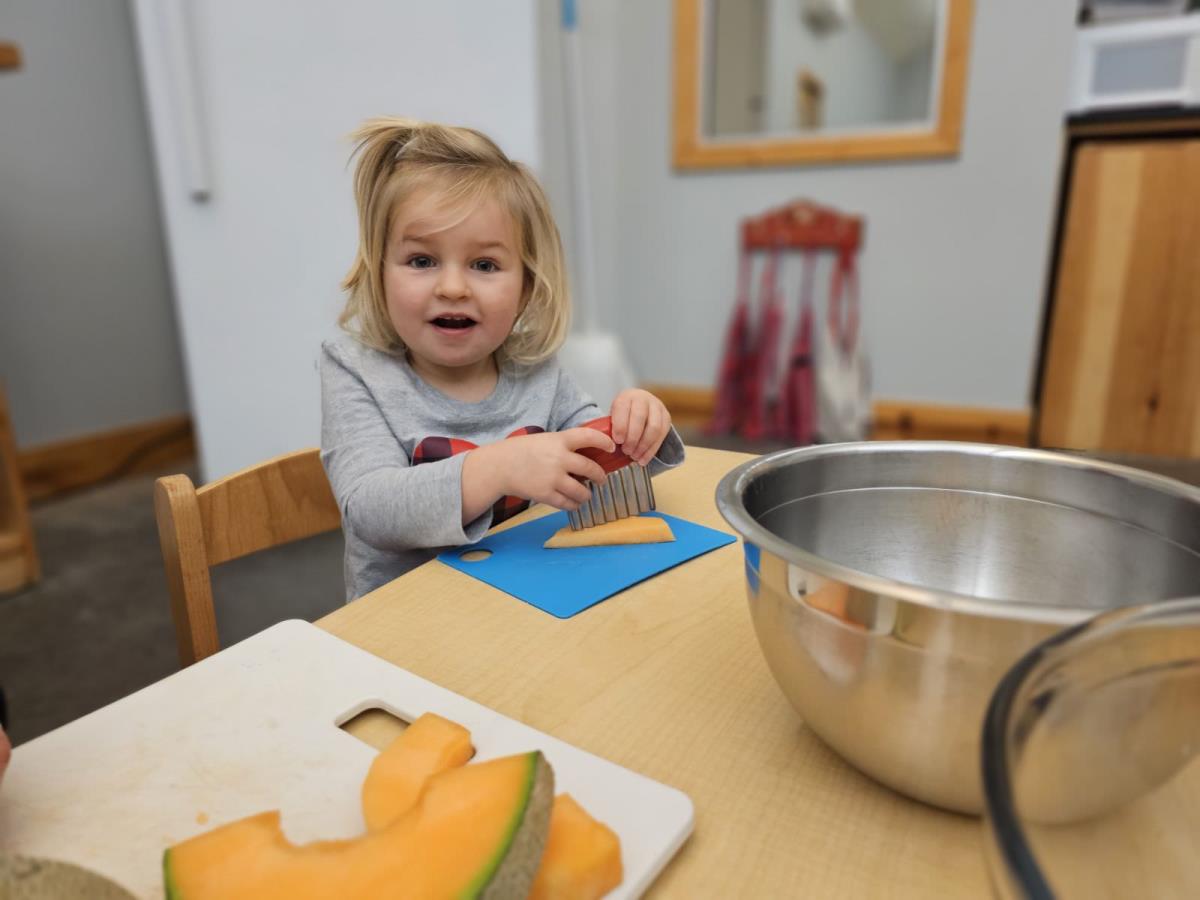Power struggles between children and caregivers are a common part of a toddler’s development. Early on they develop a strong sense of order, which helps them make sense of their world. They observe how things are to be done and this becomes their perceived reality. However, this reality does not always align with the adult's reality and often a power struggle ensues.
How can we manage a toddler power struggle?
We must understand that what most toddlers want is power, control, and autonomy. We can offer them those things through opportunities to make choices. During a power struggle, the adult’s role is to help guide the toddler in a patient, firm, and loving manner. We must not join them in their fury. This is done by having clear, concise, and consistent expectations. Our job is to support their autonomy while simultaneously setting clear boundaries.
Below is an example of how to work through a power struggle:
A child is trying to cross the street without holding an adult’s hand.
The adult says, “I can’t let you cross the street without holding my hand, my job is to keep you safe. I see that this is upsetting you and I know you really want to do this by yourself. I will let go of your hand once we have reached the park.”
If the child refuses to walk while holding your hand, you could first offer a choice. Say to the child, “You choose- hold my hand or we don’t go to the park, which will it be?”
Maybe that logic will work and that’s great, or this might make things escalate, in which case you’ll have to decide what to do for them. You may need to pick them up and try again another day. The important thing is to stick firmly with the expectations you have laid out and the next time this situation arises, your child will know that if they do not hold your hand, there will be consequences (of their own choosing).
Power struggles often look like a moment of angst. The child may get mad or sad when something doesn’t go their way. They may show they are upset by lashing out physically; kicking, hitting, screaming, or pushing, and while they are allowed to have an array of big emotions, certain behaviors do not have to be accepted. The adult needs to stick with the established plan/limit, restate the expectations, and be patient with any recalibration the toddler needs.
As an adult it is hard to see children be upset, our hearts often want to fix everything for them. But, it is important to remember that children thrive inside clear guidelines, it makes their world feel safe. When a child feels safe they feel free and able to act independently.
Preparing food with children is my favorite activity in the classroom. Seeing their enthusiasm about making food, tasting it, and eating the finished product is very rewarding.
Why is teaching children about preparing food so important?
Involving children in preparing food not only shows them how things are made, but also develops many fine motor skills such as: spooning, scooping, dumping, precise pouring, tonging, ladling, cutting, spreading, scraping with a spatula, whisking, mashing, etc. Food by itself is motivating for a young child and the process of preparing it develops concentration, patience, persistence, and memory (due to many steps involved), in addition to comprehension of sequencing. Sharing food with others fosters a real sense of community. Lastly, children are often more willing to try something that they made by themselves.
When cooking with young children, it is important to remember a few things that will make the whole process easier:
- Plan ahead and know your recipe. Have all the ingredients ready and premeasured. Toddlers have short attention spans, and their skills are just developing. The ingredients should be lined up on the tray or table in the order in which they should be added to the mixing bowl. Organize them horizontally from left to right. Combine dry ingredients: flour, salt, and rising agents in one bowl, to limit the amount of containers/bowls.
- Children present different abilities, based on age and frequency of practice. The very young child (14 months) might be only able to dump/vigorously pour ingredients with our help. The older child (18 months) is capable of spooning and scooping. The older toddler is capable of performing the whole baking project independently.
- There will be misses and messes. Be patient and friendly with errors. Involve the child in the cleaning process.
When preparing food with children, it is important to provide tools that are child-sized and easy for them to use. Manipulating kitchen gadgets strengthens the hand muscles and satisfies gross motor needs, especially tools with cranks.
I would like to share a few of my favorite tools that we often use in the YCC when preparing meals with children:
Cutting tools: crinkle cutter or plastic knife. The children chop bananas, sticks of cheese, slices of apple/pear, melons, carrots, grapes, and strawberries. When the children develop the skill of rotating the wrist, they use the knife to cut.- Ceramic vegetable peeler: works well on carrots and cucumbers. Toddlers are very successful with using it!
- Grater with crank: my favorite thing about this grater is that it keeps a child focused and occupied for a long period of time. We use it for grating cheese, carrots, apples, and zucchini for muffins, or cucumbers for tzatziki sauce. For a toddler, it works better when food is chopped into smaller chunks. Because it takes a long time to grate, we usually prepare cheese or carrots a day before we need to use them in the recipe. Your child can grate the cheese for the next day’s meal, while you are busy cooking.
- Non-slip juicer or juicer with a crank. The second juicer works with melons, watermelons, grapes, and kiwis.
- Garlic chopper and silicone garlic skin remover: we often use it for preparing garlic for hummus, tzatziki, etc
- Grape cutter for toddlers makes round produce safe for toddlers to eat by cutting it into four pieces. It's a fun activity for toddlers and works with grapes, cherry tomatoes, strawberries and blueberries!

-1.jpg)
-1.jpg)


-1.jpg)